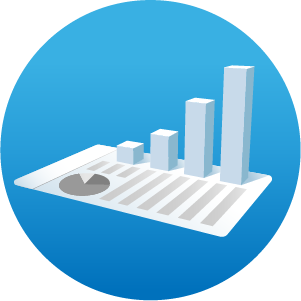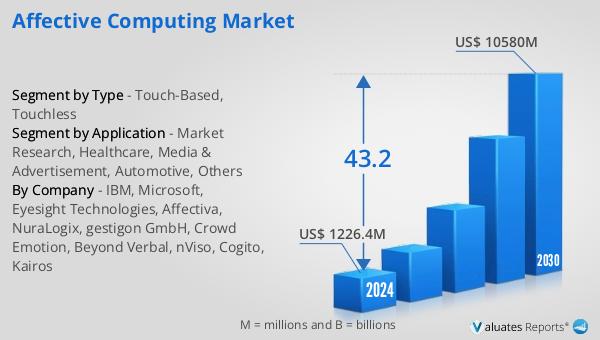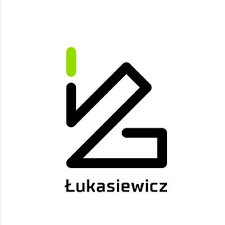List of Tables
Table 1. Global Affective Computing Market Size Growth Rate (CAGR) by Type (US$ Million): 2020 VS 2024 VS 2031
Table 2. Global Affective Computing Market Size Growth by Application (US$ Million): 2020 VS 2024 VS 2031
Table 3. Global Affective Computing Market Size by Region (US$ Million): 2024 VS 2031
Table 4. Global Affective Computing Revenue by Region (2020-2025) & (US$ Million)
Table 5. Global Affective Computing Revenue Forecast by Region (2026-2031) & (US$ Million)
Table 6. Global Affective Computing Revenue by Type (2020-2025) & (US$ Million)
Table 7. Global Affective Computing Revenue Forecast by Type (2026-2031) & (US$ Million)
Table 8. Global Affective Computing Revenue by Application (2020-2025) & (US$ Million)
Table 9. Global Affective Computing Revenue Forecast by Application (2026-2031) & (US$ Million)
Table 10. Affective Computing Revenue by Company (2020-2025) & (US$ Million)
Table 11. Affective Computing Revenue Share by Company (2020-2025)
Table 12. Ranking of Global Top Affective Computing Players by Revenue (US$ Million) in 2024
Table 13. Global Affective Computing Companies Market Concentration Ratio (CR5 and HHI) & (2020-2025)
Table 14. Global Affective Computing by Company Type (Tier 1, Tier 2, and Tier 3) & (based on the Revenue in Affective Computing as of 2024)
Table 15. Global Affective Computing Companies Headquarters
Table 16. Date of International Companies Enter into Affective Computing Market
Table 17. Global Affective Computing Companies Product & Service
Table 18. Global Affective Computing Mergers & Acquisitions, Expansion Plans
Table 19. Apple, Inc. Corporation Information
Table 20. Apple, Inc. Description and Business Overview
Table 21. Apple, Inc. Affective Computing Product
Table 22. Apple, Inc. Affective Computing Revenue (US$ Million) and Gross Margin (2020-2025)
Table 23. Apple, Inc. Revenue Proportion of Affective Computing by Product in 2024
Table 24. Apple, Inc. Revenue Proportion of Affective Computing by Application in 2024
Table 25. Apple, Inc. Revenue Proportion of Affective Computing by Geographic Area in 2024
Table 26. Apple, Inc. Recent Developments
Table 27. Microsoft Corporation Corporation Information
Table 28. Microsoft Corporation Description and Business Overview
Table 29. Microsoft Corporation Affective Computing Product
Table 30. Microsoft Corporation Affective Computing Revenue (US$ Million) and Gross Margin (2020-2025)
Table 31. Microsoft Corporation Revenue Proportion of Affective Computing by Product in 2024
Table 32. Microsoft Corporation Revenue Proportion of Affective Computing by Application in 2024
Table 33. Microsoft Corporation Revenue Proportion of Affective Computing by Geographic Area in 2024
Table 34. Microsoft Corporation Recent Developments
Table 35. IBM Corporation Information
Table 36. IBM Description and Business Overview
Table 37. IBM Affective Computing Product
Table 38. IBM Affective Computing Revenue (US$ Million) and Gross Margin (2020-2025)
Table 39. IBM Revenue Proportion of Affective Computing by Product in 2024
Table 40. IBM Revenue Proportion of Affective Computing by Application in 2024
Table 41. IBM Revenue Proportion of Affective Computing by Geographic Area in 2024
Table 42. IBM Recent Developments
Table 43. Qualcomm Corporation Information
Table 44. Qualcomm Description and Business Overview
Table 45. Qualcomm Affective Computing Product
Table 46. Qualcomm Affective Computing Revenue (US$ Million) and Gross Margin (2020-2025)
Table 47. Qualcomm Revenue Proportion of Affective Computing by Product in 2024
Table 48. Qualcomm Revenue Proportion of Affective Computing by Application in 2024
Table 49. Qualcomm Revenue Proportion of Affective Computing by Geographic Area in 2024
Table 50. Qualcomm Recent Developments
Table 51. Atos Corporation Information
Table 52. Atos Description and Business Overview
Table 53. Atos Affective Computing Product
Table 54. Atos Affective Computing Revenue (US$ Million) and Gross Margin (2020-2025)
Table 55. Atos Revenue Proportion of Affective Computing by Product in 2024
Table 56. Atos Revenue Proportion of Affective Computing by Application in 2024
Table 57. Atos Revenue Proportion of Affective Computing by Geographic Area in 2024
Table 58. Atos Recent Developments
Table 59. Palantir Technologies Corporation Information
Table 60. Palantir Technologies Description and Business Overview
Table 61. Palantir Technologies Affective Computing Product
Table 62. Palantir Technologies Affective Computing Revenue (US$ Million) and Gross Margin (2020-2025)
Table 63. Palantir Technologies Revenue Proportion of Affective Computing by Product in 2024
Table 64. Palantir Technologies Revenue Proportion of Affective Computing by Application in 2024
Table 65. Palantir Technologies Revenue Proportion of Affective Computing by Geographic Area in 2024
Table 66. Palantir Technologies Recent Developments
Table 67. Affectiva Corporation Information
Table 68. Affectiva Description and Business Overview
Table 69. Affectiva Affective Computing Product
Table 70. Affectiva Affective Computing Revenue (US$ Million) and Gross Margin (2020-2025)
Table 71. Affectiva Revenue Proportion of Affective Computing by Product in 2024
Table 72. Affectiva Revenue Proportion of Affective Computing by Application in 2024
Table 73. Affectiva Revenue Proportion of Affective Computing by Geographic Area in 2024
Table 74. Affectiva Recent Developments
Table 75. CrowdEmotion Corporation Information
Table 76. CrowdEmotion Description and Business Overview
Table 77. CrowdEmotion Affective Computing Product
Table 78. CrowdEmotion Affective Computing Revenue (US$ Million) and Gross Margin (2020-2025)
Table 79. CrowdEmotion Revenue Proportion of Affective Computing by Product in 2024
Table 80. CrowdEmotion Revenue Proportion of Affective Computing by Application in 2024
Table 81. CrowdEmotion Revenue Proportion of Affective Computing by Geographic Area in 2024
Table 82. CrowdEmotion Recent Developments
Table 83. Beyond Verbal Corporation Information
Table 84. Beyond Verbal Description and Business Overview
Table 85. Beyond Verbal Affective Computing Product
Table 86. Beyond Verbal Affective Computing Revenue (US$ Million) and Gross Margin (2020-2025)
Table 87. Beyond Verbal Revenue Proportion of Affective Computing by Product in 2024
Table 88. Beyond Verbal Revenue Proportion of Affective Computing by Application in 2024
Table 89. Beyond Verbal Revenue Proportion of Affective Computing by Geographic Area in 2024
Table 90. Beyond Verbal Recent Developments
Table 91. AR Affective Computing (Kairos AR) Corporation Information
Table 92. AR Affective Computing (Kairos AR) Description and Business Overview
Table 93. AR Affective Computing (Kairos AR) Affective Computing Product
Table 94. AR Affective Computing (Kairos AR) Affective Computing Revenue (US$ Million) and Gross Margin (2020-2025)
Table 95. AR Affective Computing (Kairos AR) Revenue Proportion of Affective Computing by Product in 2024
Table 96. AR Affective Computing (Kairos AR) Revenue Proportion of Affective Computing by Application in 2024
Table 97. AR Affective Computing (Kairos AR) Revenue Proportion of Affective Computing by Geographic Area in 2024
Table 98. AR Affective Computing (Kairos AR) Recent Developments
Table 99. iMotions Corporation Information
Table 100. iMotions Description and Business Overview
Table 101. iMotions Affective Computing Product
Table 102. iMotions Affective Computing Revenue (US$ Million) and Gross Margin (2020-2025)
Table 103. iMotions Revenue Proportion of Affective Computing by Product in 2024
Table 104. iMotions Revenue Proportion of Affective Computing by Application in 2024
Table 105. iMotions Revenue Proportion of Affective Computing by Geographic Area in 2024
Table 106. iMotions Recent Developments
Table 107. Cogito Corporation Information
Table 108. Cogito Description and Business Overview
Table 109. Cogito Affective Computing Product
Table 110. Cogito Affective Computing Revenue (US$ Million) and Gross Margin (2020-2025)
Table 111. Cogito Revenue Proportion of Affective Computing by Product in 2024
Table 112. Cogito Revenue Proportion of Affective Computing by Application in 2024
Table 113. Cogito Revenue Proportion of Affective Computing by Geographic Area in 2024
Table 114. Cogito Recent Developments
Table 115. RealEyes Corporation Information
Table 116. RealEyes Description and Business Overview
Table 117. RealEyes Affective Computing Product
Table 118. RealEyes Affective Computing Revenue (US$ Million) and Gross Margin (2020-2025)
Table 119. RealEyes Revenue Proportion of Affective Computing by Product in 2024
Table 120. RealEyes Revenue Proportion of Affective Computing by Application in 2024
Table 121. RealEyes Revenue Proportion of Affective Computing by Geographic Area in 2024
Table 122. RealEyes Recent Developments
Table 123. Nviso Corporation Information
Table 124. Nviso Description and Business Overview
Table 125. Nviso Affective Computing Product
Table 126. Nviso Affective Computing Revenue (US$ Million) and Gross Margin (2020-2025)
Table 127. Nviso Revenue Proportion of Affective Computing by Product in 2024
Table 128. Nviso Revenue Proportion of Affective Computing by Application in 2024
Table 129. Nviso Revenue Proportion of Affective Computing by Geographic Area in 2024
Table 130. Nviso Recent Developments
Table 131. EmoReact Corporation Information
Table 132. EmoReact Description and Business Overview
Table 133. EmoReact Affective Computing Product
Table 134. EmoReact Affective Computing Revenue (US$ Million) and Gross Margin (2020-2025)
Table 135. EmoReact Revenue Proportion of Affective Computing by Product in 2024
Table 136. EmoReact Revenue Proportion of Affective Computing by Application in 2024
Table 137. EmoReact Revenue Proportion of Affective Computing by Geographic Area in 2024
Table 138. EmoReact Recent Developments
Table 139. Uniphore Corporation Information
Table 140. Uniphore Description and Business Overview
Table 141. Uniphore Affective Computing Product
Table 142. Uniphore Affective Computing Revenue (US$ Million) and Gross Margin (2020-2025)
Table 143. Uniphore Revenue Proportion of Affective Computing by Product in 2024
Table 144. Uniphore Revenue Proportion of Affective Computing by Application in 2024
Table 145. Uniphore Revenue Proportion of Affective Computing by Geographic Area in 2024
Table 146. Uniphore Recent Developments
Table 147. gestigon GmbH Corporation Information
Table 148. gestigon GmbH Description and Business Overview
Table 149. gestigon GmbH Affective Computing Product
Table 150. gestigon GmbH Affective Computing Revenue (US$ Million) and Gross Margin (2020-2025)
Table 151. gestigon GmbH Revenue Proportion of Affective Computing by Product in 2024
Table 152. gestigon GmbH Revenue Proportion of Affective Computing by Application in 2024
Table 153. gestigon GmbH Revenue Proportion of Affective Computing by Geographic Area in 2024
Table 154. gestigon GmbH Recent Developments
Table 155. Slyce Corporation Information
Table 156. Slyce Description and Business Overview
Table 157. Slyce Affective Computing Product
Table 158. Slyce Affective Computing Revenue (US$ Million) and Gross Margin (2020-2025)
Table 159. Slyce Revenue Proportion of Affective Computing by Product in 2024
Table 160. Slyce Revenue Proportion of Affective Computing by Application in 2024
Table 161. Slyce Revenue Proportion of Affective Computing by Geographic Area in 2024
Table 162. Slyce Recent Developments
Table 163. Hume AI Corporation Information
Table 164. Hume AI Description and Business Overview
Table 165. Hume AI Affective Computing Product
Table 166. Hume AI Affective Computing Revenue (US$ Million) and Gross Margin (2020-2025)
Table 167. Hume AI Revenue Proportion of Affective Computing by Product in 2024
Table 168. Hume AI Revenue Proportion of Affective Computing by Application in 2024
Table 169. Hume AI Revenue Proportion of Affective Computing by Geographic Area in 2024
Table 170. Hume AI Recent Developments
Table 171. Emotion Research Lab Corporation Information
Table 172. Emotion Research Lab Description and Business Overview
Table 173. Emotion Research Lab Affective Computing Product
Table 174. Emotion Research Lab Affective Computing Revenue (US$ Million) and Gross Margin (2020-2025)
Table 175. Emotion Research Lab Revenue Proportion of Affective Computing by Product in 2024
Table 176. Emotion Research Lab Revenue Proportion of Affective Computing by Application in 2024
Table 177. Emotion Research Lab Revenue Proportion of Affective Computing by Geographic Area in 2024
Table 178. Emotion Research Lab Recent Developments
Table 179. Affecter Corporation Information
Table 180. Affecter Description and Business Overview
Table 181. Affecter Affective Computing Product
Table 182. Affecter Affective Computing Revenue (US$ Million) and Gross Margin (2020-2025)
Table 183. Affecter Revenue Proportion of Affective Computing by Product in 2024
Table 184. Affecter Revenue Proportion of Affective Computing by Application in 2024
Table 185. Affecter Revenue Proportion of Affective Computing by Geographic Area in 2024
Table 186. Affecter Recent Developments
Table 187. Cipia Vision Ltd Corporation Information
Table 188. Cipia Vision Ltd Description and Business Overview
Table 189. Cipia Vision Ltd Affective Computing Product
Table 190. Cipia Vision Ltd Affective Computing Revenue (US$ Million) and Gross Margin (2020-2025)
Table 191. Cipia Vision Ltd Revenue Proportion of Affective Computing by Product in 2024
Table 192. Cipia Vision Ltd Revenue Proportion of Affective Computing by Application in 2024
Table 193. Cipia Vision Ltd Revenue Proportion of Affective Computing by Geographic Area in 2024
Table 194. Cipia Vision Ltd Recent Developments
Table 195. NuraLogix Corporation Information
Table 196. NuraLogix Description and Business Overview
Table 197. NuraLogix Affective Computing Product
Table 198. NuraLogix Affective Computing Revenue (US$ Million) and Gross Margin (2020-2025)
Table 199. NuraLogix Revenue Proportion of Affective Computing by Product in 2024
Table 200. NuraLogix Revenue Proportion of Affective Computing by Application in 2024
Table 201. NuraLogix Revenue Proportion of Affective Computing by Geographic Area in 2024
Table 202. NuraLogix Recent Developments
Table 203. North America Affective Computing Revenue by Country (2020-2025) & (US$ Million)
Table 204. North America Affective Computing Revenue by Country (2026-2031) & (US$ Million)
Table 205. North America Affective Computing Revenue by Type (2020-2025) & (US$ Million)
Table 206. North America Affective Computing Revenue by Application (2020-2025) & (US$ Million)
Table 207. Asia-Pacific Affective Computing Revenue by Region (2020-2025) & (US$ Million)
Table 208. Asia-Pacific Affective Computing Revenue by Region (2026-2031) & (US$ Million)
Table 209. Asia-Pacific Affective Computing Revenue by Type (2020-2025) & (US$ Million)
Table 210. Asia-Pacific Affective Computing Revenue by Application (2020-2025) & (US$ Million)
Table 211. Europe Affective Computing Revenue by Country (2020-2025) & (US$ Million)
Table 212. Europe Affective Computing Revenue by Country (2026-2031) & (US$ Million)
Table 213. Europe Affective Computing Revenue by Type (2020-2025) & (US$ Million)
Table 214. Europe Affective Computing Revenue by Application (2020-2025) & (US$ Million)
Table 215. Latin America Affective Computing Revenue by Country (2020-2025) & (US$ Million)
Table 216. Latin America Affective Computing Revenue by Country (2026-2031) & (US$ Million)
Table 217. Latin America Affective Computing Revenue by Type (2020-2025) & (US$ Million)
Table 218. Latin America Affective Computing Revenue by Application (2020-2025) & (US$ Million)
Table 219. Middle East and Africa Affective Computing Revenue by Country (2020-2025) & (US$ Million)
Table 220. Middle East and Africa Affective Computing Revenue by Country (2026-2031) & (US$ Million)
Table 221. Middle East and Africa Affective Computing Revenue by Type (2020-2025) & (US$ Million)
Table 222. Middle East and Africa Affective Computing Revenue by Application (2020-2025) & (US$ Million)
Table 223. Affective Computing Key Raw Materials, Industry Status and Trend
Table 224. Affective Computing Key Raw Materials and Upstream Suppliers
Table 225. Affective Computing Clients Status and Trend
Table 226. Affective Computing Typical Clients
Table 227. Affective Computing Distributors
Table 228. Affective Computing Market Trends
Table 229. Affective Computing Market Drivers
Table 230. Affective Computing Market Challenges
Table 231. Affective Computing Market Restraints
Table 232. Research Programs/Design for This Report
Table 233. Key Data Information from Secondary Sources
Table 234. Key Data Information from Primary Sources
List of Figures
Figure 1. Affective Computing Product Picture
Figure 2. Global Affective Computing Market Size by Type (US$ Million): 2020 VS 2024 VS 2031
Figure 3. Global Affective Computing Revenue Market Share by Type in 2024 & 2031
Figure 4. Touch-based System Product Picture
Figure 5. Touchless-based System Product Picture
Figure 6. Global Affective Computing Market Size by Application (US$ Million): 2020 VS 2024 VS 2031
Figure 7. Global Affective Computing Revenue Market Share by Application in 2024 & 2031
Figure 8. e-Commerce and Marketing
Figure 9. Healthcare
Figure 10. Entertainment and Gaming
Figure 11. Automotive
Figure 12. Customer Service
Figure 13. Others
Figure 14. Affective Computing Report Years Considered
Figure 15. Global Affective Computing Revenue, (US$ Million), 2020 VS 2024 VS 2031
Figure 16. Global Affective Computing Market Size (2020-2031) & (US$ Million)
Figure 17. Global Affective Computing Market Size Market Share by Region: 2024 Versus 2031
Figure 18. Global Affective Computing Revenue Market Share by Region (2020-2031)
Figure 19. Global Affective Computing Revenue Market Share Forecast by Type (2020-2031)
Figure 20. Global Affective Computing Revenue Market Share Forecast by Application (2020-2031)
Figure 21. Touch-based System of Affective Computing Revenue Market Share by Application, 2024 VS 2031
Figure 22. Touchless-based System of Affective Computing Revenue Market Share by Application, 2024 VS 2031
Figure 23. Affective Computing Revenue Share by Company (2024)
Figure 24. Affective Computing Market Share by Company Type (Tier 1, Tier 2, and Tier 3): 2020 VS 2024
Figure 25. Touch-based System Revenue Proportion by Company in 2024
Figure 26. Touchless-based System Revenue Proportion by Company in 2024
Figure 27. North America Affective Computing Revenue 2020-2031 (US$ Million)
Figure 28. North America Affective Computing Revenue Market Share by Type (2020-2025)
Figure 29. North America Affective Computing Revenue Market Share by Application (2020-2025)
Figure 30. Asia-Pacific Affective Computing Revenue 2020-2031 (US$ Million)
Figure 31. Asia-Pacific Affective Computing Revenue Market Share by Region (2020-2031)
Figure 32. Asia-Pacific Affective Computing Revenue Market Share by Type (2020-2025)
Figure 33. Asia-Pacific Affective Computing Revenue Market Share by Application (2020-2025)
Figure 34. Europe Affective Computing Revenue Growth Rate 2020-2031 (US$ Million)
Figure 35. Europe Affective Computing Revenue Market Share by Country (2020-2031)
Figure 36. Europe Affective Computing Revenue Market Share by Type (2020-2025)
Figure 37. Europe Affective Computing Revenue Market Share by Application (2020-2025)
Figure 38. Latin America Affective Computing Revenue Growth Rate 2020-2031 (US$ Million)
Figure 39. Latin America Affective Computing Revenue Market Share by Country (2020-2031)
Figure 40. Latin America Affective Computing Revenue Market Share by Type (2020-2025)
Figure 41. Latin America Affective Computing Revenue Market Share by Application (2020-2025)
Figure 42. Middle East and Africa Affective Computing Revenue Growth Rate 2020-2031 (US$ Million)
Figure 43. Middle East and Africa Affective Computing Revenue Market Share by Country (2020-2031)
Figure 44. Middle East and Africa Affective Computing Revenue Market Share by Type (2020-2025)
Figure 45. Middle East and Africa Affective Computing Revenue Market Share by Application (2020-2025)
Figure 46. Affective Computing Supply Chain (Upstream and Downstream Market)
Figure 47. Global Production Market Share of Affective Computing Raw Materials by Region in 2024
Figure 48. Affective Computing Distribution Channels
Figure 49. Global Affective Computing Percentage 2020-2031: Indirect Sales VS Direct Sales
Figure 50. Global Affective Computing Percentage 2020-2031: Online Sales VS Offline Sales
Figure 51. Bottom-up and Top-down Approaches for This Report
Figure 52. Data Triangulation
Figure 53. Key Executives Interviewed


